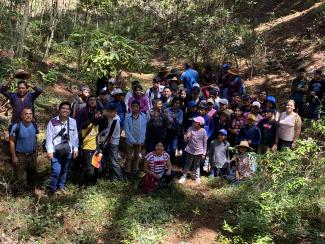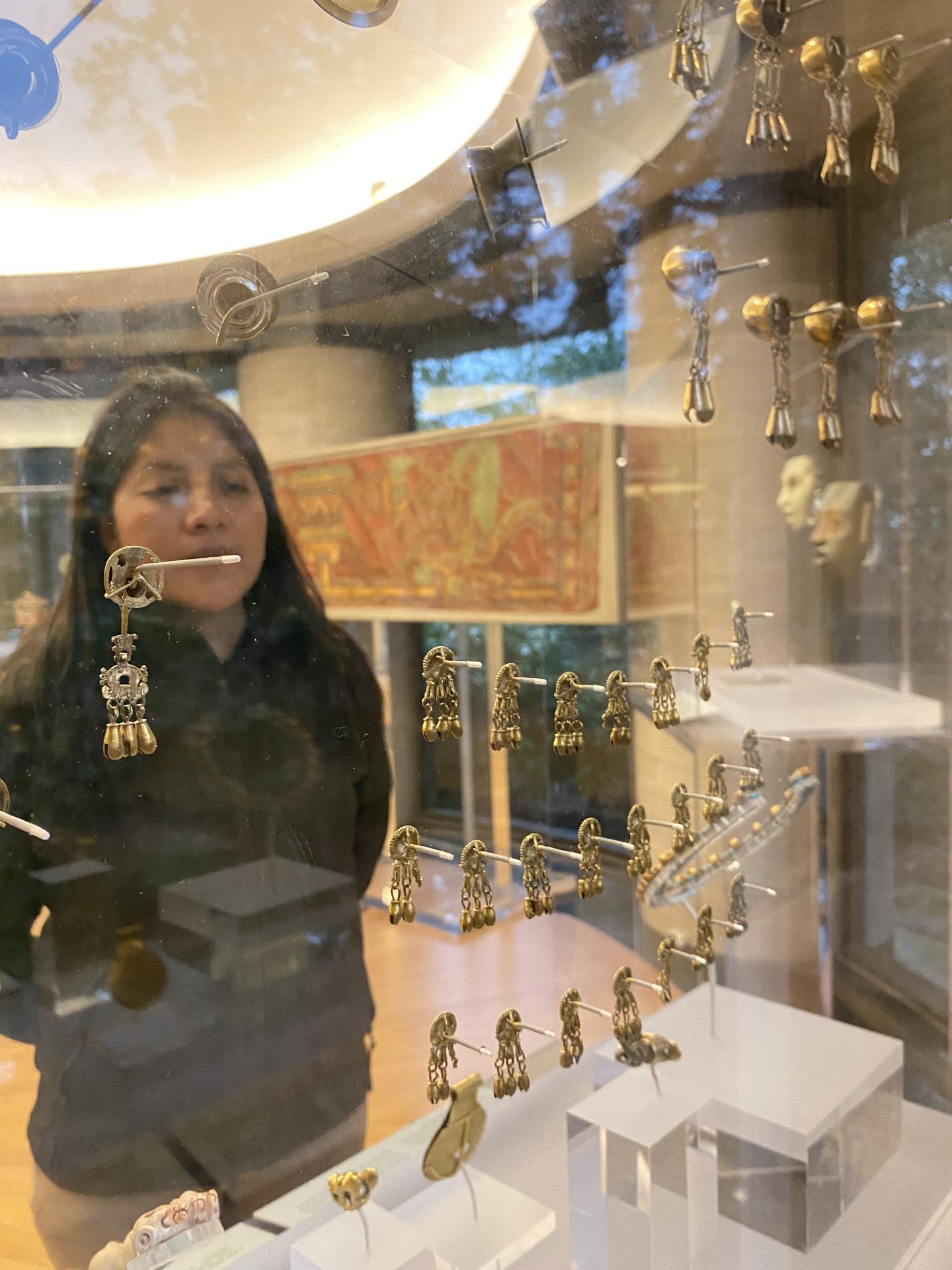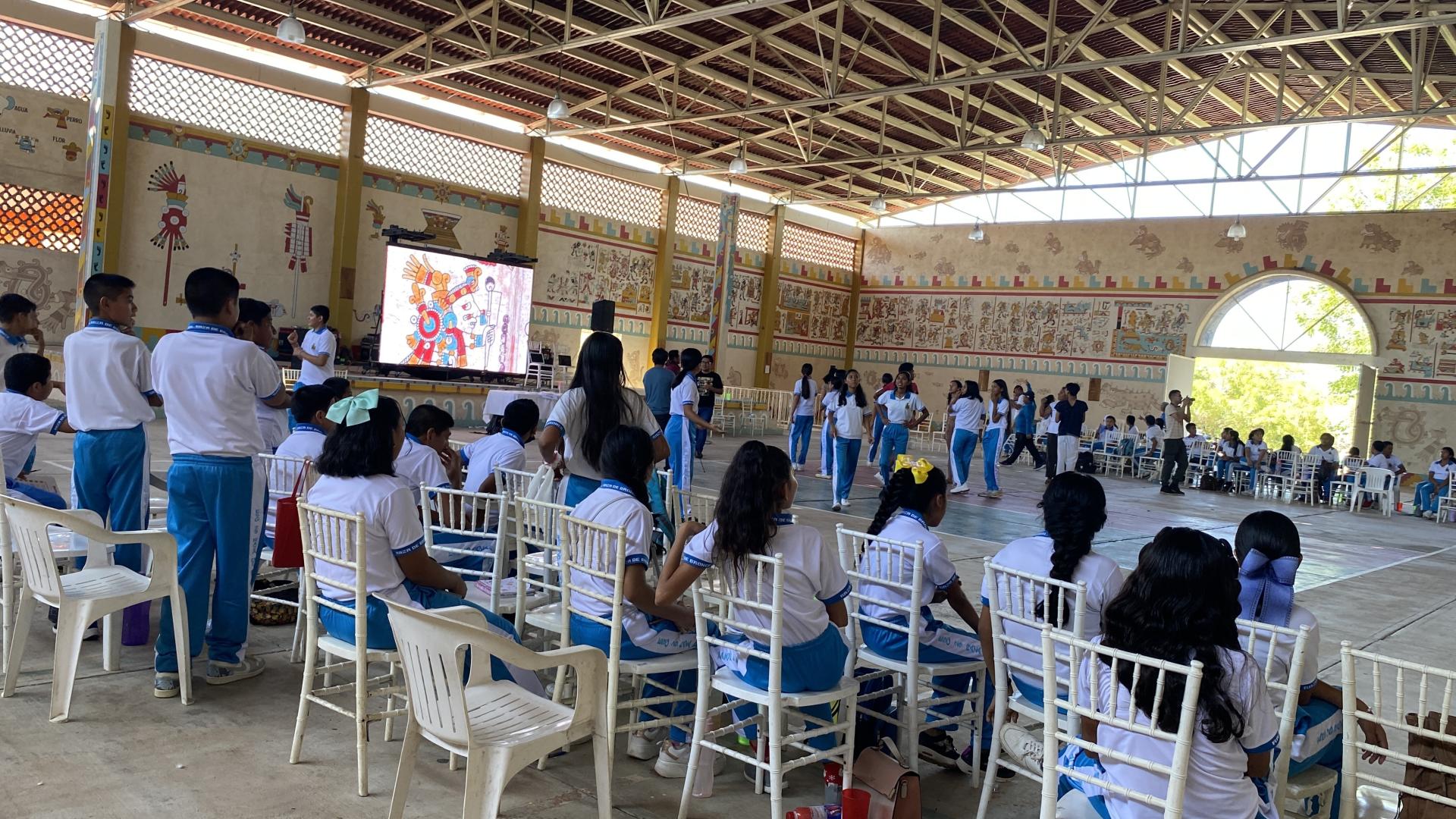
Since the dawn of humanity, human beings have been creators of culture, shaping it according to their worldview to construct an identity. The stories of Indigenous Peoples have been recorded in stone, wood, palm, clay, bone, and skin. These relics reflect how our ancestors saw the world and hold profound value, as there is a direct link between material culture and living heritage. Funerary, religious, sacred, and ceremonial elements directly connect with our cultural practices: they are not simply “decorative objects,” but have safeguarded a history and shaped a collective identity.
With the arrival of the colonizers, many of these pieces were stolen from their place of origin and scattered around the world, uprooting a valuable part of a Peoples’ history. Today, these pieces are displayed in museums, academic institutions, and private collections where they are frequently named in another language and cataloged and classified as “objects of curiosity” without considering their true meaning. Meanwhile, in our communities, these pieces were forgotten. The colonial education that we, descendants of Indigenous Peoples, received was designed to make us forget our roots and view everything that came from out- side as better. It’s a story that repeats itself in Indigenous cultures worldwide.
The rematriation of the material cultural heritage of Indigenous Peoples seeks the return of these elements to their place of origin, where the main beneficiaries are the cultural descendants, as an act of social justice and human rights. This movement originated in the late 1960s, when a group of Native Americans demanded the rehumanization of their ancestors’ remains. They questioned the power of archaeology to excavate sacred sites and tombs to collect, display, and study their ancestors. Calling out the desecration of their ancestors’ graves and demanding the return of both their remains and their material cultural heritage marked the beginning of a greater struggle for decolonization.

Archives of the National Museum of the American Indian, Washington, D.C.
Rematriation is a matter of both ethics and morals. It constitutes a collective right of Indigenous Peoples and represents a form of postcolonial reparation. Some see it as a symbolic and social act, while others define it as a social relationship in itself. Today, some 60 years later, countries such as the United States, Australia, Canada, New Zealand, and Chile have made significant progress on the issue of rematriation. Thanks to this progress, rematriation is now a right recognized in the United Nations Declaration on the Rights of Indigenous Peoples. Although this agreement does not yet have binding legal status, it represents a significant step forward because it officially recognizes the right of Indigenous Peoples to recover their cultural heritage.
This struggle for rematriation has sparked critical global conversations, forcing major museums to reflect on what they have collected. At the same time, these achievements have served as a guide for Indigenous Peoples demanding the return of their material cultural heritage and ancestral remains. This is a particularly sensitive and complex issue, as these remains represent not only physical, but also spiritual, dispossession. Remains that were unearthed and taken in the name of science were manipulated, studied, and even displayed without any ethics or respect.
It is essential to clarify that rematriation and restitution are different. In rematriation, Indigenous Peoples are the main actors and seek recognition of their right to recover their cultural heritage. In restitution, it is the governments that negotiate the fate of the artifacts. Current laws recognize the State as the legitimate owner of cultural assets, which are considered national heritage, thereby ignoring the rights of Indigenous Peoples and denying the living relationship they maintain with their ancestors. Despite the significant presence of Indigenous Peoples in Mexico, there is still no law that addresses the right to rematriation of ancestral remains or cultural elements belonging to these cultures. This presents a challenge and a constant struggle with the nation-state for the recognition of the cultural rights of Indigenous Peoples in a context where State interests are always prioritized.

Dumbarton Oaks, Washington, D.C. Photo by Omar Aguilar Sánchez.
On this journey toward the recovery of cultural heritage are the Ñuu Savi (Rain People), also known as “La Mixteca,” who live in a region located in northeastern Oaxaca and the areas bordering the states of Puebla and Guerrero in what is now Mexico. Here we speak Tu’un Savi (the Language of the Rain), a tonal language with 81 spoken variants: 4 in Puebla, 21 in Guerrero, and 56 in Oaxaca. This culture developed as a civilization that left behind an immense material cultural wealth, represented in remnants of gold, wood, bones, and skin, where our ancestors captured historical events, lineages, sacred narratives, and ritual acts, shaping a history and identity.
Centuries of colonization and extraction resulted in our cultural heritage ending up in large display cases as “Mixtec collections” without any cultural or spiritual context, separated from its surroundings. Through a long period of dispossession and neglect, we were alienated from our own heritage to the point of no longer recognizing it. Achieving rematriation for the Ñuu Savi is a long, but necessary, path. The active participation of the Ñuu Savi is essential to ensure that the return of our cultural and ancestral remains responds to our needs and unique ways of treating their heritage. There must also be collaboration among the Ñuu Savi, the three levels of government, institutions, museums, and organizations: a collective effort that can make the difference between the success or failure of the return.
The challenge is not only to address rematriation internationally, but also to strengthen our collective identity as a Nation. To achieve this, we must work on reappropriating and recovering our material cultural heritage, language, and culture to recognize and value who we are. It is crucial to raise awareness and involve young people and children in the care and preservation of cultural elements and sacred sites, as well as to strengthen our language in a context where we have rights, but also responsibilities. Furthermore, collaboration with Ñuu Savi specialists is essential. Their contributions from archaeology, anthropology, history, law, linguistics, and international relations can strengthen the foundations for demanding rematriation internationally. It is also necessary to develop a protocol for the rematriation of Ñuu Savi. These defined courses of action can help successfully carry out rematriation.

Workshop Series, “The Return of Our Ancestors,” Yucu Saa Community Museum, Villa de Tututepec, Oaxaca, Mexico. Photo by
Omar Aguilar Sánchez.
Forming a support network with other Nations striving for rematriation can provide valuable tools based on shared experiences. As a Ñuu Savi ña’a (woman), I have been privileged to access the archives of important international museums and observe Ñuu Savi cultural elements up close. Although this is an opportunity few people have access to, this experience carries a tremendous responsibility to share this knowledge with my community. Only by recognizing our roots, strengthening our identity, and working as a team can we progress in demanding the return of our heritage and ancestral remains stored in international museums. This path may take generations to fully realize, but its seed has already been sown with the power of memory and collective commitment.
--Izaira López Sánchez (Ntyivi Ñuu Savi) is Project Coordinator at the Americas Research Network (ARENET) and leader of the Ñuu Savi Collections Around the World Project.
Top photo: Tour to the Sacred City of Tyiyo Ka’nu in San Pedro Teozacoalco, Oaxaca, Mexico. Photo by Omar Aguilar Sánchez.
